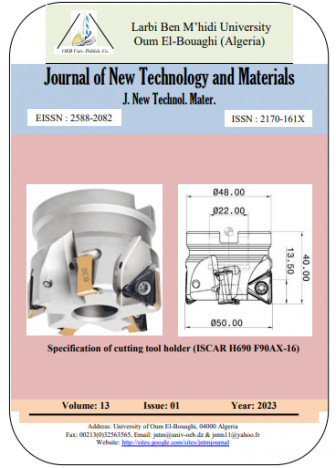Optimization of process parameters during the manufacturing of brake friction lining from coconut/palm kernel/periwinkle shells composite using SN ratio and entropy-TOPSIS techniques
Keywords:
Parameter Optimization, Brake friction lining, Signal-to-Noise ratio, Entropy-TOPSIS Method.Abstract
This study established the optimum process parameters for manufacturing brake friction lining (BFL) from coconut shells
(CNS), palm kernel shell (PKS) and periwinkle shells (PWS) composites. Optimization was achieved in respect of the
performance metrics (coefficient of friction, wear rate and hardness) using Signal-to-Noise (SN) ratio and Entropy and
Technique for the Ordered Preference by Similarity to the Ideal Solution (Entropy-TOPSIS). The optimum parameters
obtained using SN ratio and Entropy-TOPSIS method were compared and are respectively 29 MPa and 29 MPa (molding-
pressure), 120°C and 140°C (molding-temperature), 6 and 6 minutes (curing-time) and 2 hr. and 3 hr. (heat-treatment-time).
ANOVA using Minitab 21.1.0.0 reveals the effect of the molding pressure and the curing time on the synergized performance
metric as statistically significant at α
= 0.05 with total contribution of 94.44%. Comparatively, the significant parameters values
were unaltered in both methods of optimization. Therefore, it is concluded that any of the optimum parameter values
obtained using either the SN ratio approach or the Entropy-TOPSIS method can safely be used for producing BFL of
different composition of CNS, PKS and PWS





